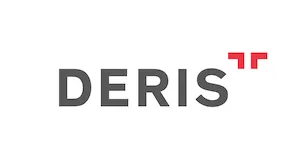- within Intellectual Property topic(s)
- in United States
- with readers working within the Oil & Gas industries
Geographically positioned between Europe and Asia, Turkey is an important strategic country with a population of 79.8 million and the largest youth population compared with countries in the European Union. As a member of the G20, Turkey aims to position itself in the global value chain and to strengthen its export platform by focusing on high-technology, including electronic machinery and equipment and automotive patents. The major export markets for Turkish products are Europe, the United States, Russia, North Africa and the Middle East.
As a natural transport hub, Turkey serves as a key location for the exchange of goods from Europe to Asia and vice versa, which significantly increases the importance of IP rights protection in Turkey.
This chapter provides an overview of patent enforcement in light of the new Industrial Property Code, which entered into force on January 10 2017.
Patent enforcement under the new IP Code
The new IP Code enables patentees to use legal means harmonised with EU legislation and international agreements (eg, the Agreement on Trade-Related Aspects of IP Rights) and offers viable tools to implement a successful patent enforcement programme in Turkey.
A patentee facing infringement activities in the market must carefully determine its goals for enforcing its patent rights. These goals may include:
- licensing its standard-essential patents (SEPs);
- stopping the unauthorised use of the patent by competitors and eventually building awareness in the market;
- compensating for damages; or
- monitoring the export and import of infringing goods.
The Turkish legal framework provides tools that can be used to implement an enforcement strategy, which should be tailored to the patentee's ultimate goals. It is first necessary to evaluate the specific conditions of the relevant sector and the type of infringement.
In particular, the new IP Code allows patentees to claim permanent and preliminary injunctions, compensation for damages, the determination of evidence and facts at the outset of the dispute and border measures against infringement.
Permanent and preliminary injunctions
The Civil Procedural Law and the new IP Code entitle the patentee to apply for a permanent injunction to stop the offer for sale and marketing of infringing products to third parties, as well as for seizure and destruction of the infringing products at the end of the civil infringement action.
Under the IP Code, a preliminary injunction order may be requested at any time during the proceedings in case of an imminent threat of serious or irreparable damage. A quick and effective tool for stopping infringement, preliminary injunctions secure the effectiveness and enforceability of the court's final judgment by:
- stopping the infringing acts;
- seizing the infringing products that have been produced or imported, as well as the means of their production or the means of performing the patented method within Turkish territory (including customs, free port or free trade areas), and holding such infringing products in custody; and
- ordering the posting of security or a guarantee for indemnification of any potential damages to the defendant.
The new IP Code notably includes within the ambit of seizure the means of production of the infringing products and the means of performing the relevant patented method, in order to avoid interrupting the production process for non-infringing products.
The patentee can request a preliminary injunction to stop the unauthorised use of the patent, including the sale, offer for sale, use, holding in hand, import and export of the infringing goods. The patentee may also request the court to order the defendant to provide a financial guarantee to secure its compensation claim for the duration of the proceedings. The courts first seek to understand the patent and determine whether the infringing activity falls within the scope of third-party activity, and may refer the case to a panel of experts for an initial evaluation of the asserted infringement. Where applicable, specialised IP courts will order the defendant to deposit a guarantee to secure the plaintiff's damages (on the plaintiff's request) at the outset of the patent infringement action. The courts are more inclined to order quick preliminary injunctions if the infringing products are seized at the border, in order to avoid the release of the products until the finalisation of the patent infringement action.
Damages
Three types of damages are available in civil actions:
- material damages;
- moral damages; and
- damages for use which is detrimental to the patent's reputation.
Material damages can be claimed for the non-realised income caused by the patent infringement. The damage suffered by the patentee includes not only the value of the effective loss, but also the income non-realised because of the infringement of the patent right. The non-realised income is calculated in accordance with one of the following evaluation methods (as decided by the patentee):
- the income that the patentee might have generated had the infringement not occurred;
- the net income generated by the infringer from the infringing use of the patent; or
- an exemplary licence fee that would have been paid had the infringer lawfully used the patent under a licence contract.
In calculating the non-realised income, the court will consider relevant circumstances such as:
- the economic value of the patent;
- the remaining term of protection for the patent at the time of infringement; and
- the type, nature and number of licences granted in respect of the patent.
Where the court is of the opinion that the patentee has not fulfilled its obligation to use the patent, the IP Code provides that the non- realised income shall be calculated according to the exemplary licence fee.
In practice, the calculation of damages entails certain difficulties in providing documentary evidence of the damages sustained by the plaintiff. The most important documents relate to the defendant's commercial and accountancy records – which are often improper and incomplete and seldom accurately reflect its economic activity – as well as the relation of the sold/produced/imported goods to the infringed patent. Another major difficulty lies in the professional qualifications of experts appointed by the courts to assess and quantify the damages and the speed and accuracy with which they operate.
Considering the risk of damages being set at an amount lower than the actual income gained by the defendant from the infringement, it is advisable to devise a strategy which encourages the parties to settle the matter without resorting to a lengthy action.
Evidential action before filing main action
Prior to the institution of the main patent infringement action (civil action), an evidential action can be instituted before the IP courts for the determination of the act of infringement and/ or evidence. This is a non-adversarial action which can be conducted ex parte, depending on the court's discretionary competence in this regard. An affirmative decision on such an action serves as evidence within the context of the subsequently filed main civil action.
In view of the difficulties in obtaining a fast and effective preliminary injunction, this type of action may be useful as concrete evidence of third-party infringement before the courts. It is also possible to request a preliminary injunction within the context of this action. The plaintiff must institute the main civil action within two weeks of the date of the preliminary injunction order obtained through an evidential action. Failure to file the action within this period results in the release of the preliminary injunction.
Moreover, this type of action may be useful in determining the production and marketing capacity of the infringer, thus facilitating the calculation of damages (this is all the more important since the commercial records often underestimate the real capacity).
This route also has the advantage of promoting settlement negotiation without resorting to lengthy infringement litigation.
In an SEP licensing programme, unauthorised patent users have settled to compensate for past use and enter the licensing system for future use through a strong and continuous awareness campaign targeting patent users in different industry segments. The reaction to the campaign has been positive: almost 90% of the market has agreed to enter the licensing programme as a result of a tailored strategy including the determination of evidence and facts relating to infringing activities.
Border measures
Turkey provides the right to ask for border measures against the transfer of goods that infringe patents (or other IP rights). Customs is empowered, either ex officio or on request, to suspend formalities for the release of goods which are found or thought to be infringing during routine customs clearance. A customs detention programme can be implemented on registration of the IP rights by the rights holder. Rights holders are required to file a centralised customs electronic registration application, which will have effect for one year.
Suspension of the suspicious goods by Customs is a useful tool to overcome the disadvantages and delays of the court in rendering preliminary injunctions. The Customs Act also provides the possibility to file for a simplified destruction procedure with Customs, which can further help to avoid lengthy patent litigation.
Our experience with a border detention programme in conjunction with Customs concerning patented textile dyes has shown that patents can be effectively enforced at the Turkish border. As a result of the recordal of the patent, Customs has been able to suspend more than 10 tons of textile dyes suspected to be infringing. The IP courts have been quick to order preliminary injunctions and prevented the release of the suspended infringing products within seven to 10 days of filing the request. Seizures at different customs outposts have not only raised awareness in the market, but also increased demand for patentees' products on the Turkish market.
Further considerations for patentees
Patent use
The patentee is obliged to use its patented invention. However, non-use does not prevent the patentee from enforcing its patent rights.
Failure to use the patent within three years following publication of the patent grant decision or four years following the patent application date (whichever is later) results not in cancellation of the patent, but rather in the grant of a compulsory licence.
Under the new IP Code, a compulsory licence can be requested on the following grounds:
- failure to use the patented invention and failure to show serious preparations to use the patent;
- insufficient use to meet the national demand;
- acts or behaviour resulting in a restriction or distortion of competition or breach of competition rules;
- export of pharmaceutical products addressing public health needs in other countries; or
- inability to develop a new plant variety without infringing a patent.
The patentee can remedy non-use by using the patent any time after expiry of the three or four-year period and before the filing date of the compulsory licence request.
The acts and behaviours resulting in a restriction or distortion of competition or breach of competition rules were introduced by the IP Code as new grounds for requesting a compulsory licence. SEP owners in particular should be aware of these rules and should be diligent in using their patents in Turkey.
Burden of proof
The general rule under the Procedural Law is that the burden of proof of patent infringement rests with the patentee. However, the new IP Code introduces a rule concerning the burden of proof of infringement for process patents. A patentee considering enforcing its process patent should first evaluate whether the patent in dispute covers a new product or substance or a known product or substance.
The burden of proof in an infringement action where the asserted patent covers a process concerning a new product or substance lies with the defendant. The burden of proof in an infringement action where the asserted patent covers a process concerning a known product or substance may be shifted to one of the other parties at the court's discretion.
Competent court
The IP court of the plaintiff's residence is competent for infringement actions to be instituted by the rights holder against third parties. However, if the plaintiff does not have a residence in Turkey, the competent court will be the IP court where its registered patent agent's office is located.
In patent invalidity actions the competent court is the court of the patentee's domicile. If the patentee is not domiciled in Turkey, the competent court is the IP court where its registered patent agent's office is located.
On July 20 2016 Turkey added the appellate court, which is a new court tier between the first-instance courts and the Supreme Court. The objective is to reduce the workload of the Supreme Court and to contribute to consistent, better-quality jurisprudence.
Conclusion
In view of the previously mentioned legal means to protect patents in Turkey, it is recommended that the patentee carefully considers the most advantageous battleground and most appropriate legal tools before adopting an enforcement strategy. This will facilitate settlement of the dispute and therefore increase the likelihood of avoiding lengthy patent litigation proceedings.
Determining the relevant sector and marketing and distribution conditions of the infringing product, as well as the export and import capacity of the infringer and its commercial extensions in other jurisdictions, is crucial in order to build flexible protection strategies in accordance with the patentee's needs and available legal means.
The infringer's level of knowledge of IP matters is another important aspect to be considered at the outset of the enforcement programme, as this may allow the patentee to assess upfront the infringer's potential reactions to a court action or out-of-court settlement. In cases where the level of IP awareness is low, the patentee should strive to build awareness not only with the infringer, but also with customers and other users of the patented technology.
Our involvement in a patent protection programme in the Turkish automotive spare parts industry has shown us that trying to avoid litigation where possible and maximising efforts to build awareness – especially among users of the relevant patent – provide more effective results in regulating and disciplining the market in terms of preventing unauthorised patent use.
The legal tools available in Turkey, when enriched with pre-litigation instruments, enable patentees to build awareness of patent rights – including SEPs – among unauthorised patent users, customers and licensees. In light of the wide range of legal remedies on offer and recent strengthening of IP protection in Turkey, patentees should consider the country as an important jurisdiction in which to register and enforce their patents
The content of this article is intended to provide a general guide to the subject matter. Specialist advice should be sought about your specific circumstances.




